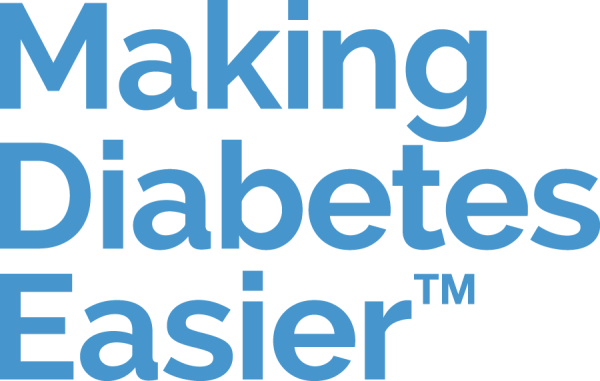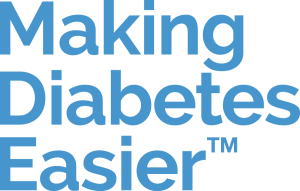Type 1 diabetes and exercise

Regular exercise has many health benefits for all people, including those living with type 1 diabetes [1, 2].
However, physical activity does carry some potential risks for people with diabetes [2], which you will need to be aware of. The good news is that there are precautions/actions you can take to reduce these risks [2].
In this article, we look at exercise recommendations for people with type 1 diabetes and offer some tips so you can make the most of your workout.
The benefits of exercising for diabetes
Physical activity is as important for those with type 1 diabetes as it is for the general population [3].
Exercising regularly may have numerous health benefits for people with type 1 diabetes [1, 2]. These include:
- Improved cardiovascular fitness [1, 2, 3]
- Healthier blood vessels [1]
- Better body composition [1]
- Improved quality of life [1]
- Improved insulin sensitivity [2, 3] and a decreased need for insulin [1]
- Fewer and less severe complications from diabetes [1]
- Stronger muscles [2, 3]
- Better triglyceride and cholesterol (LDL) levels [3]
- Lower waist circumference and lower body mass [3]
- Improved A1C levels [3]
- Lower mortality [4]
It is recommended that children and adults with type 1 diabetes take part in regular physical activity [3].
How exercise can affect blood glucose levels
In a person without diabetes, blood glucose levels are maintained relatively stable during exercise for several hours without eating [1].
In people with type 1 diabetes, however, exercise can raise the risk of hypoglycaemia (low blood glucose levels) and hyperglycaemia (high blood glucose levels) unless carbohydrate intake or insulin doses are not adjusted accordingly [1, 2, 4].
Generally, exercise can be broken down into two main types — aerobic and anaerobic — and whether exercise causes your blood glucose levels to spike or drop depends on your exercise type [5].
So, although exercise is overall beneficial for people with type 1 diabetes, precautions/action must be taken to avoid the risk of hypoglycaemia and hyperglycaemia [2, 3, 4].
However, each person with type 1 diabetes is different, and exercise may affect each person's blood glucose variability differently [3].
Before starting any exercise, talk to your healthcare team about which activities might be most suitable for you or which strategies would work best to do your favourite exercise[6]. Your healthcare professional will consider any variabilities before recommending a type and duration of exercise that will likely work well for you [3].
Aerobic exercise

Aerobic exercise involves the repetitive and continuous movement of large muscle groups [2]. This type of exercise tends to be longer in duration but lower in intensity [5].
Typical aerobic activities include [1, 2, 4]:
- Swimming
- Jogging or running
- Cycling
- Walking
- Brisk walking
- Aerobics
- Dancing
During aerobic exercise, blood glucose levels can drop dramatically for people with type 1 diabetes [1, 5].
Anaerobic exercise
Anaerobic exercise is generally shorter or in spurts but at high intensity [5]. This type of exercise involves brief, repetitive exercises with weights, weight machines, resistance bands, or using one's body weight to build strength [4, 5]. This exercise tends to be shorter in duration but more intense [5].
Typical anaerobic activities include [1, 5]:
- Weight lifting/resistance exercise
- Sprinting
- Boxing
- Hockey
- Netball
- High-intensity interval training (e.g. Crossfit)
During these exercises, blood glucose levels can spike for people with type 1 diabetes [5].
Exercise recommendations
It is generally recommended that people with diabetes should try to minimise sedentary time (the time a person is sitting or lying down) and regularly engage in both aerobic and anaerobic exercise [3].
Most adults with type 1 diabetes should engage in at least 150 minutes of moderate-to-vigorous aerobic exercise a week, spread over at least three days with no more than two days of rest in between [3].
The American Diabetes Association (ADA) also recommends 2–3 weekly resistance exercise sessions on nonconsecutive days for this group [3].
Recommendations (and precautions) will vary depending on individual factors, so it is best to speak to your diabetes care team about tailoring any exercise or fitness plan to your individual needs [2].
Hypoglycaemia and exercise: precautions and tips

Exercise may cause hypoglycaemia if your insulin dose or carbohydrate consumption is not amended accordingly [3, 4]. People with type 1 diabetes report that the risk of hypoglycaemia is the biggest barrier that prevents them from working out [1].
Each person with type 1 diabetes should have physical activity and exercise recommendations tailored to their individual needs [2].
Based on several studies and guidelines, the following tips and strategies can help prevent exercise-induced hypoglycaemia for people with type 1 diabetes. Before you make any treatment adjustments, be sure to consult with your healthcare provider:
- Check your blood glucose levels before working out [6]. If your blood glucose levels are lower than 5.0 mmol/L (90 mg/dL) before working out, the ADA suggests eating a small snack of 15–30 g of carbohydrates before exercising [2, 3]. 15–30g of carbs can consist of two tablespoons of raisins, half a cup of fruit juice, a regular, non-diet cold drink, or glucose tablets [6].
- You can also increase your blood glucose levels by eating more carbs immediately before, during, and right after exercise [1, 4]. The number of carbs by which you should increase your intake may also depend on whether insulin levels can be lowered during the workout, the time of day during which you work out, your weight, and the intensity/duration of the activity you are doing [2, 3, 4].
- You can decrease bolus insulin doses before meals or lower the basal insulin rate of your insulin pump [4]. The reduction of pre-exercise mealtime insulin can vary between 25% and 75%, but this depends on the intensity and duration of the workout [2].
- Try incorporating short sprints and intermittent, high-intensity short bouts of exercise (lasting 10–15 seconds) in your aerobic exercise [1]. Another suggested strategy is making sprints at the beginning or end of moderate-intensity activities, which may protect against hypoglycaemia [2, 4].
- Do resistance training (such as weight lifting) before or after aerobic exercise [1]. Resistance training has been shown to protect against exercise-induced hypoglycaemia in adults [1, 2, 4].
- Be wary that working out late in the day or the evening may raise the risk of overnight hypoglycaemia in people with type 1 diabetes [4]. To avoid this, you can try lowering your insulin pump's overnight basal insulin infusion rate by about 20% from bedtime to 3 am [4].
Your healthcare team will be able to walk you through the steps to prepare for exercise and minimise the risk of experiencing hypoglycaemia [6].
Hyperglycaemia and exercise: minimising risks
In some cases, intense physical activity may cause blood glucose levels to spike, especially if they were high before exercising [3, 4]. Examples of brief, intense exercise include sprinting, resistance, or high-intensity interval training [4].
If your blood glucose levels are above 13.9 mmol/L, test for ketones first [2].
Ketones are substances made when your body breaks down fat for energy [6]. The presence of ketones in your urine indicates insufficient insulin in your body to keep blood glucose levels in check [6]. You shouldn’t perform physical activity if high ketone levels exist [2]. Exercising when you have high levels of ketones puts you at risk of ketoacidosis, a serious complication of diabetes that needs immediate treatment [6].
To prevent this, a small bolus of rapid-acting insulin after exercise or a temporary increase in the basal insulin infusion in pump users may be enough to avoid the risk of hyperglycaemia [4].
The importance of regular blood glucose testing
Your response to the above strategies may depend on individual characteristics such as age or sex [1]. Furthermore, many physical, psychological, and even emotional factors can influence a person’s response to exercise [1].
For these reasons, it’s important to test your blood glucose levels before, during, and after exercise (or use continuous glucose monitoring) to see how different types of exercise affect your blood glucose levels [1].
Exercise is recommended for maintaining good health in people with type 1 diabetes [1, 2, 3].
However, there are risks you need to be aware of and things you can do to prevent those risks [2, 3, 6]. Each person with type 1 diabetes is different [2]. Before exercising, speak to your healthcare professional to find the exercise right for you [6].


